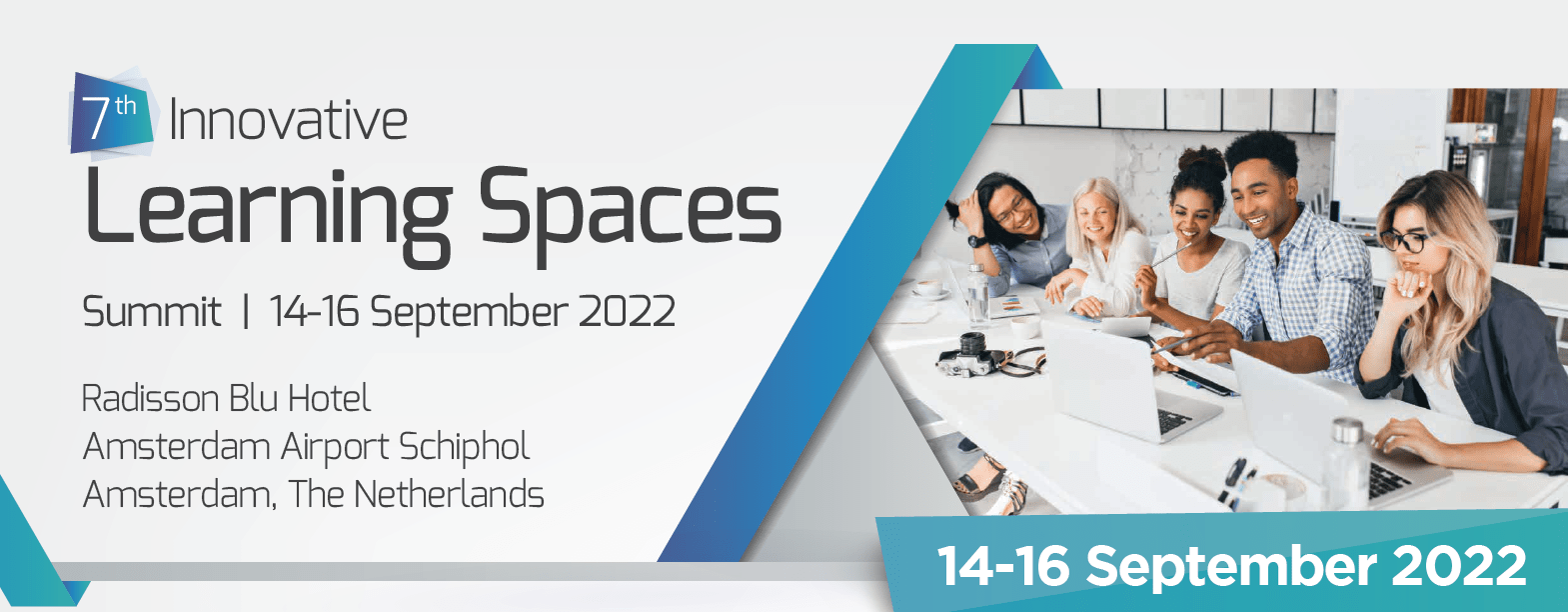A cutting-edge learning environment combines the use of furniture, space, and technology to promote increased collaboration and flexibility between students and teachers. University educational facilities need solutions to maximize their square footage without complete reconstruction of existing buildings, which can adapt to the demands of our busy, multipurpose classrooms.
The upcoming 7th Innovative Learning Spaces Summit will take place September 14th-16th, 2022 in Amsterdam, the Netherlands and will bring together principals, deans, architects, librarians, facility managers and other industry experts to delve into the importance of creating a technology-enabled student experience, emerging trends in higher education, education planning with career readiness in mind, future-proofing the learning space design and many other important topics.

As more educators are utilizing virtual and hybrid classrooms, we can take a closer look at some of the advantages compared to traditional classrooms:
Technology-enabled Student Experience
Teachers can utilize tools such as online videos, interactive demonstrations, class surveys and educational websites to present topics in more interactive ways that transition teaching from a static activity to making learning a truly interactive experience by embracing the growth of artificial intelligence, VR, gamification, and more. Internet connectivity can join students from one class, an entire school or country, or even other cities from around the world.
For example, many educators have already adopted interactive whiteboards in the classroom. In fact, the interactive whiteboard market is expected to grow at a CAGR of 3.69% between 2018 and 2023. Students who are accustomed to learning and using digital technology are better prepared with the skills and knowledge to succeed outside of the classroom.
At our upcoming 7th Innovative Learning Spaces Summit, speakers from the University of Southern California, the University of Birmingham, and the University of Sharjah will share their perspectives on how their increased investments in emerging technology platforms have become integrated into the learning space for years to come.
High Interactivity
In traditional learning environments, the primary communication channel being used in the classroom is face-to-face communication between the teacher and student. In an effective hybrid classroom, in addition to in-person learning there would be multiple channels such as instant messaging, voice chat, and video conferencing that connect both on-site and remote students.
This allows students to communicate in the manner they are most comfortable with while allowing the teacher to easily adapt to individual students’ needs. Shared workspaces also help maintain engagement with the course materials.
At our upcoming Summit, we will have the opportunity to explore key strategies for hybrid synchronous learning from international institutions such as the University of Hong Kong, KU Leuven, University of Geneva, and more to see how interactivity has been shown to provide a more engaging learning experience.
Future-oriented Collaborative Learning Spaces
Hybrid classrooms allow educators to bring in different file types, embed media, shared files, and access a wide range of learning material that can prepare students for life after their studies.
There are several platforms that allow breakout sessions, similar to working in pairs or small groups in a physical classroom, that will prepare students to use digital collaboration as a tool to learn new concepts, retain information, and apply what they’ve learned to real-life scenarios. Students can also search educational databases and sites to learn about a topic they are interested in and help them get ahead and prepare for their ideal future career.
Join us in September to hear case studies from Munich International School, ICSadviseurs, FIU Online and more on how to implement new pedagogical approaches in learning space design that empowers staff and students to improve education and learning outcomes.
We’re excited about the support of our Speaking Sponsor, Hawkins\Brown. Don’t miss the opportunity to connect with them to see how they can help design and deliver innovative and socially sustainable buildings for all types of schools.

Also, we are looking forward to Day 2 of the Summit where we will take a tour of the University of Amsterdam's facilities. The university library has created around 1700 study places in different buildings, a range in the types of study places and furniture including individual and group work, and video call places to follow online meetings. The tour will give a great opportunity to witness the transition from traditional lecture halls into innovative multi-functional active learning spaces.
The 7th Innovative Learning Spaces Summit will provide a great platform to connect and learn from the best while taking a closer look at valuable insights shared through practical case studies, interactive sessions and engaging workshops while exploring strategies to encourage academics to embrace new ways of learning.
You can receive more information about the summit by requesting your free brochure and then when you are ready to join us, register here.
We can’t wait to see you!

